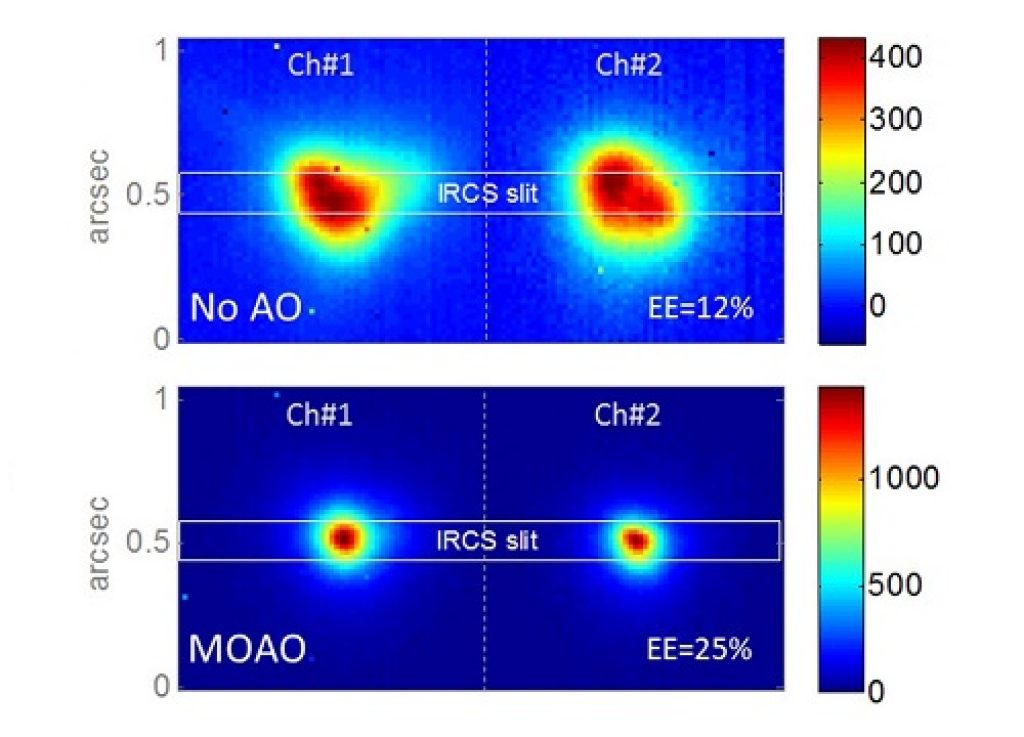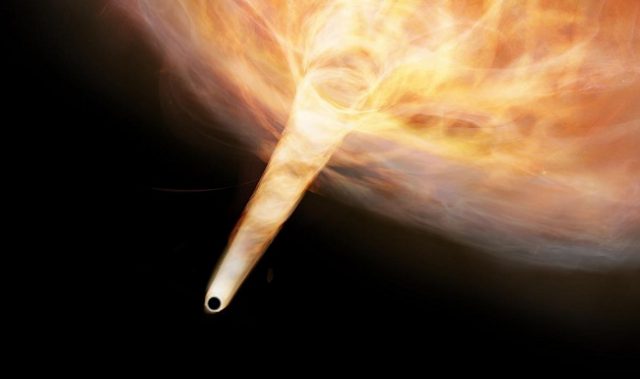
AsianScientist (Sep. 8, 2014) – A tool developed by Japanese scientists to improve the performance of astronomical telescopes has successfully seen first light.
Adaptive optics (AO) aim to correct optical aberrations and distortion. This is done by measuring the distortions in a wavefront and compensating for them with a device that corrects those errors; these include deformable mirrors or liquid crystal arrays.
The National Astronomical Observatory of Japan (NAOJ), together with the Adaptive Optics Lab of the University of Victoria, the National Research Council of Canada, and Tohoku University, developed a tool to demonstrate the capabilities of a new AO system.
The tool, known as Raven, uses wavefront measurements from three natural guide stars to provide corrections for atmospheric turbulence in any locations of the field of view of the telescope. Raven applies this Multi-Object Adaptive Optics (MOAO) correction towards two science targets and can re-image them side-by-side on a single imaging camera or on the slit of Subaru Telescope’s Infrared Camera and Spectrograph.
The researchers note that this ability to conduct spectroscopy of two targets at once makes Raven a useful scientific instrument.
In the first run, they found that the atmospheric profile of turbulence was more complex than what had been accounted for in initial laboratory calculations. Following adjustments, testing continued in the second run. Here, different conditions were explored, and the scientists particularly targeted two metal-poor stars in the Milky Way. Their success in obtaining useful data of two stars, and subsequently determining their chemical abundances, confirmed that MOAO is applicable to a variety of astronomy needs.
According to Co-Investigator Shin Oya from the NAOJ, “It can increase the number of objects we can observe as well as the amount of information we can obtain about them.”
Raven will be available for science use in 2015; Subaru Telescope is currently accepting case proposals to test on the system.
——-
Copyright: National Astronomical Observatory of Japan.
Disclaimer: This article does not necessarily reflect the views of AsianScientist or its staff.












